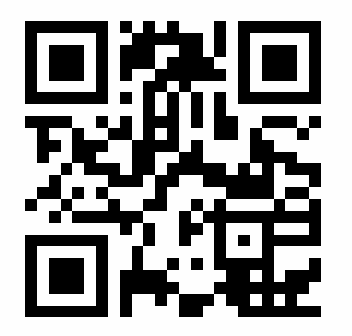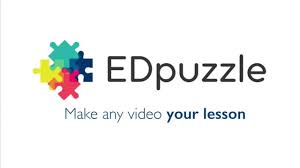VR humor

Digital Literacy for St. Cloud State University

https://www.iste.org/standards/for-students#startstandards
+++++++++++
https://blog.stcloudstate.edu/ims/2016/11/22/iste-standards-for-students/
https://www.edsurge.com/news/2017-04-06-5-all-too-common-ways-edtech-implementations-fail
On the surface, adopting technology to support teacher needs or student challenges isn’t terribly complex: define the problem you’re trying to solve, identify the right tools for the job, and implement the tools effectively and with fidelity.
challenges. End users are too often removed from the decision-making process during procurement. Educators argue that too many products don’t actually meet the needs of teachers or students. Still others worry that it is too easy to implement new and popular technology without considering whether it is research-based and effective.
Only 33 percent of parents surveyed by the Learning Assembly said their child’s school did an excellent job using technology to tailor instruction.
Technology is just a tool, not a means in and of itself. Any school or teacher that sets out to use technology for its sake alone, and not in the service of personalizing learning or addressing specific needs, is on a mission to fail.
A survey from Samsung found that 37 percent of teachers say they would love to use technology but don’t know how, and 76 percent say they would like a professional development day dedicated to technology.
ideos that focus on scaling and modeling best practices (produced by places like the Teaching Channel and The Learning Accelerator) can help teachers and schools do this.
Teachers face initiative fatigue: They are constantly being asked to implement new programs, integrate new technologies, and add on layers of responsibility. In one Wisconsin district, nearly half of teachers felt ongoing district initiatives were a “significant area of concern.”
Forward-thinking schools take the time to learn from the challenges of other schools, and recruit a coalition of the willing.
Relying on multiple devices (remote, clicker, iPad, computer mouse) to launch or navigate technology can be difficult. Additionally, teachers may start to use a tool, only to realize it is not flexible enough to meet their original needs, fit into the constraints of their particular school or classroom, or allow them to integrate their own content or supplemental resources.
Lack of useful data, problem definition, weak teacher buy-in, first impressions, and usability challenges all have the potential to torpedo smart technology products.
By Nicole Krueger Leadership
https://www.iste.org/explore/articleDetail?articleid=2177
A virtual reality headset can take students on an immersive journey to another world. But no matter how cool it is, if that $3,000 piece of equipment enters a classroom and doesn’t provide any real instructional value, it can quickly become a very expensive paperweight.
Most schools don’t do edtech procurement really well yet. Sometimes we buy products that end up in closets because they don’t fit the instructional needs of students, and we end up not being good stewards of taxpayer dollars.
Located in the district’s central office, where hundreds of teachers and staff members stop by each week for professional development, the playground offers a creative space that encourages teachers to explore new tools that have been vetted and approved by the district’s tech department.
In the United States, K-12 schools spend more than $13 billion a year on edtech — often without any idea whether it will make a difference in learning outcomes.
++++++++++++++++
More on ISTE in this IMS blog
https://blog.stcloudstate.edu/ims?s=iste
more on digital literacy for ed leaders in this IMS blog
https://blog.stcloudstate.edu/ims?s=digital+literacy+EDAD
Where | Къде: СУ „Димитър Матевски“ https://goo.gl/maps/rojNjE3dk4s and online ( виртуално)
When | Кога: 2. май, 2018, 14 часа | May 2, 2018, 2PM local time (Bulgaria)
Who | Кой: преподаватели и педагози | teachers and faculty
How | Как: използвайте “обратна връзка” за споделяне на вашите идеи | use the following hashtag for backchanneling #BGtechEd
short link: http://bit.ly/teachassess |

Live stream: |
Тема1. Сравняване на Kahoot, Edpuzzle и Apester – 1-1, 1/2 час продължителност
Topic 1: A comparison of Kahoot, Apester and EdPuzzle
definitions | термини : BYOD (BYOx), flipped classroom, formative assessment (vs summative assessment)
| Kahoot (https://kahoot.it/) – 10 мин. | |
 |
|
| Apester (https://apester.com/ )– 10-15мин. | |
| |
|
| Edpuzzle (https://edpuzzle.com )– 10 – 15мин. | |
 |
https://edpuzzle.com/assignments/5ad4cad48f4df34107c58bd0/watch |
Тема 2. Виртуална реалност в учебния процес – теория и практика- 1-1, 1/2 час продължителност
Topic 2. Virtual reality in teaching and learning – theory and hands-on
When a student is brilliant on the street corner but falling asleep in class, something is wrong with the schooling system
Ако учащ се е страхотен на ъгъла на улицата, но се проваля или заспива в клас, тогава нещо е грешно с учебната система
https://blog.stcloudstate.edu/ims/2018/04/17/education-teched-frenemies/
VR can be inexpensive and effective | Виртуална / разширена реалност може да бъде ефикасна и ефективна: https://blog.stcloudstate.edu/ims/2018/04/26/teaching-virtual-reality/
https://www.linkedin.com/groups/2811/2811-6391674579739303939
Definitions for VR/AR/MR | дефиниции на: виртуална реалност; разширена реалност; смесена реалност
https://blog.stcloudstate.edu/ims/2018/03/21/t4tl-games-and-vr-library/
#3 from the following blog entry: https://blog.stcloudstate.edu/ims/2018/04/17/practical-about-vr-and-ar-in-schools/ (go beyond storytelling)
++++++++++++++
Additional Information | Дпълнителна литература/информация
https://blog.stcloudstate.edu/ims/2016/02/22/formative-assessment-ideas/
Formative Assessment Tools: https://blog.stcloudstate.edu/ims/2016/01/13/formative-assessment-tools/
https://blog.stcloudstate.edu/ims/2014/12/09/formative-assessment/
++++++++++
more on social media in education in this IMS blog
https://blog.stcloudstate.edu/ims?s=social+media+education
++++++++++++++
more on online practices in library in this iMS blog
https://blog.stcloudstate.edu/ims?s=online+library
++++++++++++
more on library technologies in this IMS blog
https://blog.stcloudstate.edu/ims?s=library+technologies
Luciano Floridi, professor of Philosophy and Ethics of Information at the Oxford Internet Institute, explains that grey power is not ordinary socio-political or military power. It is not the ability to directly influence others, but rather the power to influence those who influence power. To see grey power, you need only look at the hundreds of high-level instances of revolving-door staffing patterns between Google and European governmentsand the U.S. Department of State.
And then there is ‘surveillance capitalism’. Shoshana Zuboff, Professor Emerita at Harvard Business School, proposes that surveillance capitalism is ‘a new logic of accumulation’. The incredible evolution of computer processing power, complex algorithms and leaps in data storage capabilities combine to make surveillance capitalism possible. It is the process of accumulation by dispossession of the data that people produce.
The respected security technologist Bruce Schneier recently applied the insights of surveillance capitalism to the Cambridge Analytica/Facebook crisis.
For Schneier, ‘regulation is the only answer.’ He cites the EU’s General Data Protection Regulation coming into effect next month, which stipulates that users must consent to what personal data can be saved and how it is used.
++++++++++++++++++++++
more on the Internet in this IMS blog
https://blog.stcloudstate.edu/ims?s=internet
Teachers can bring VR stories into the classroom in many different ways for meaningful learning experiences. Imagine a scavenger hunt where students narrate a story based on what they find. Or consider using objects they see to identify vocabulary words or recognize letters. Students should have purpose in their viewing and it should directly connect to standards.
Starting with virtual reality, stories in apps such as Google Spotlight Storiesand YouTube 360 videos have been popular from the start.
Similar to the new movie, Ready Player One, they provide an intense experience where the viewer feels like they are in the center of the story.
Using a mobile device or tablet, the student can start the story and look around the scene based on their interest, rather than the cameras focus. New apps such as Baobab VR have continued to appear with more interactions and engagement.
A creative way to have your students create their own virtual stories is using the app Roundme. Upload your 360 image and add directional sound, links and content. Upload portals to walk the viewer into multiple scenes and then easily share the stories by link to the story.
Newer augmented reality apps that work with ARKit have taken another approach to storytelling. Augmented Stories and My Hungry Caterpillar.Qurious, a company that is working on a release blending gaming, making and storytelling in one app.
Storyfab, turns our students into the directors of the show
A new AR book, SpyQuest, has moved the immersive experience a big step forward as it helps define the story by bringing the images to life. Through the camera lens on a device, the stories make students the agents in an adventure into the world of espionage. The augmented reality experiences on the images use the accompanying app to scan the scene and provide further insight into the story.
+++++++++++++
more on storytelling in this IMS blog
https://blog.stcloudstate.edu/ims?s=digital+storytelling
more on VR and storytelling in this IMS blog
https://blog.stcloudstate.edu/ims?s=virtual+reality+storytelling